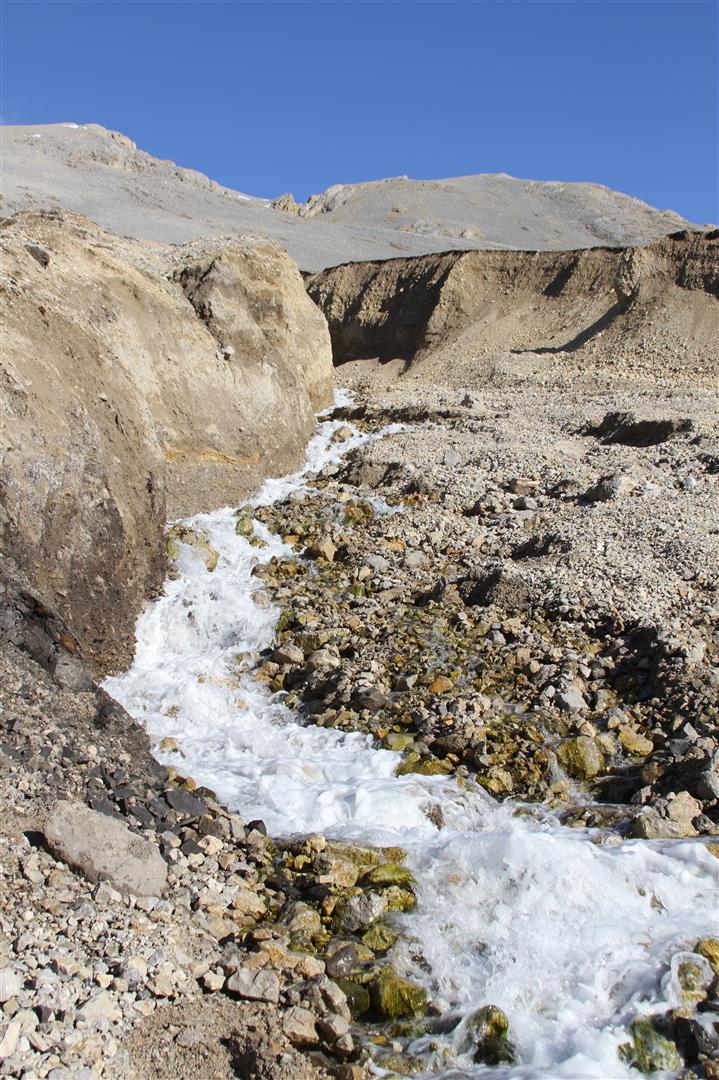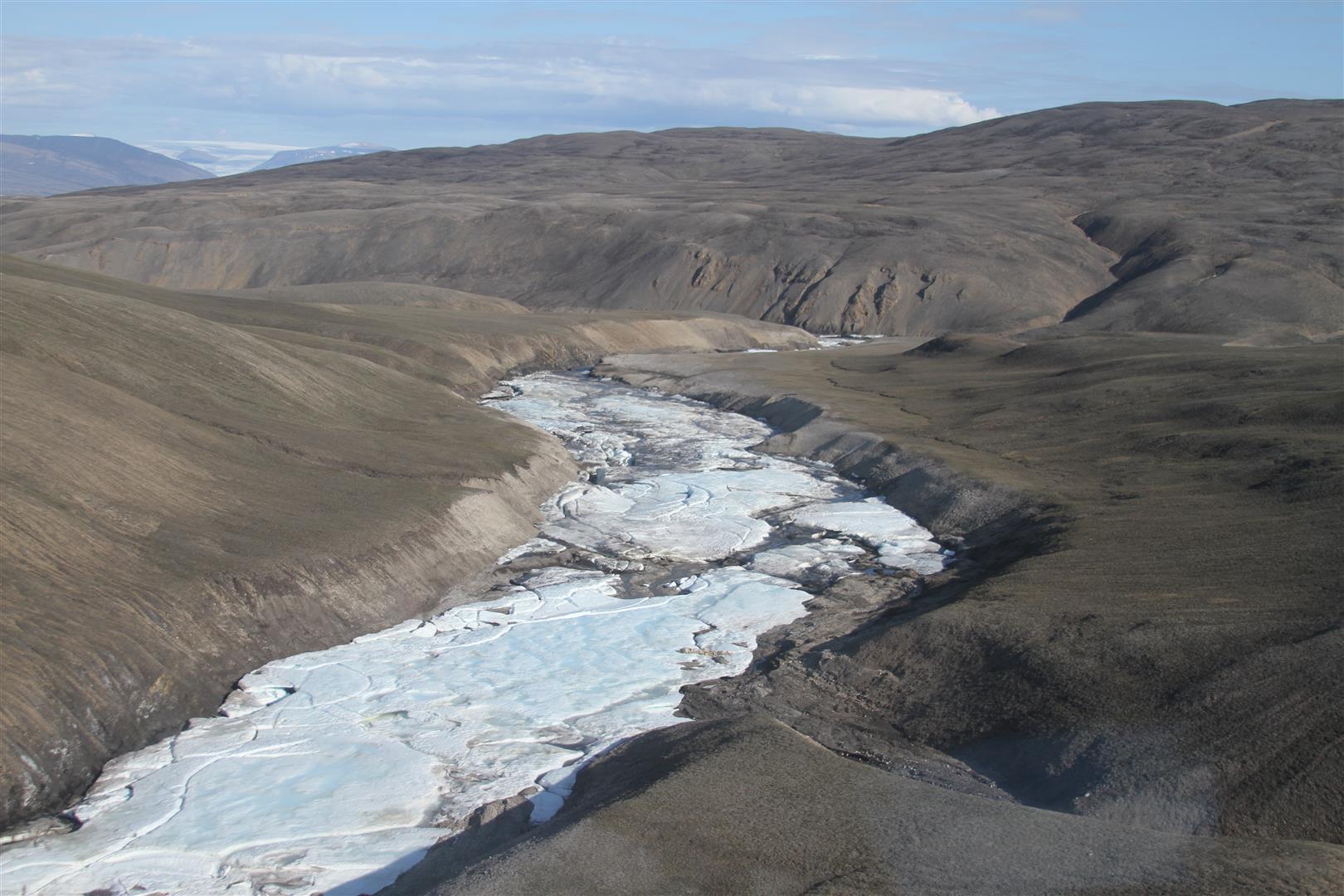New Record For Earth's Farthest North Spring, And It's A Gusher


A frozen river in the Arctic desert recently led scientists to a remarkable find: a spring gushing from a deep gully on Canada's Ellesmere Island.
The unnamed bubbler is the farthest north spring ever found, researchers reported June 9 in the journal Geology. Spotted near Otto Fiord on the island's west coast, the roaring spring emerges from a deeply carved mountainside almost 1,000 feet (300 meters) above the ice-filled river.
But it's more than location that makes this Arctic spring so surprising — its incredible flow is rare in the polar latitudes.
"It's perplexing," study lead author Steve Grasby said. "It's a huge volume of water."
So much water emerges from the spring that it has filled the river valley below with ice. The strange Ice River, as it's informally called, led researchers to the spring, said Grasby, a geologist with the Geological Survey of Canada, a division of Natural Resources Canada in Calgary, Alberta. [Photos: The World's Farthest North Spring]
The river valley is completely choked with ice even though there are no glaciers nearby, the researchers said. Also, the entire area is a polar desert, with only 2.5 inches (64 millimeters) of rain and snow each year.
But only the river has ice. The surrounding rock is barren.
Get the world’s most fascinating discoveries delivered straight to your inbox.
"That's the embarrassing part, actually," Grasby told Live Science's Our Amazing Planet. "We've worked there for about 15 years now, and it took until 2009 to finally ask why the river was always full of ice."
Grasby and his Canadian colleagues traced the frozen river upstream by helicopter, and discovered a spring "roaring out the hillside," he said.
The discovery solved the river mystery: The spring water freezes in the river during winter. It took a few more years to figure out where the water might be coming from.
Cascading Arctic springs are few and far between because thick blankets of permafrost (permanently frozen ground) usually block groundwater from escaping to the surface. The Ice River spring flows at 26 gallons to 132 gallons (100 to 500 liters) per second, even in winter, when air temperatures drop below minus 60 degrees Fahrenheit (minus 51 degrees Celsius), according to monitors Grasby placed in the spring. Springs elsewhere on Ellesmere Island are mere dribbles in comparison, about 2 gallons (8 liters) per second.
Melting permafrost couldn't supply enough water to feed the Ice River spring, and the spring water is too salty to come from permafrost, the researchers discovered. (Buried salt layers on Ellesmere Island were deposited when the Arctic Ocean basin opened.) Nor could the annual rain and snowfall feed the vigorous spring. Instead, the researchers think glacial meltwater travels underground from distant mountains, then hits underground faults that intersect beneath the spring.
"If two faults intersect, it creates a pipeline through the rocks for groundwater to flow through," Grasby said. The water rises up along this "pipeline" and spills out the mountainside.
No one knows how old the spring is, but its gully has walls 30 feet (9 meters) high, and there are signs of old floods and ice-dammed lakes in the river below, Grasby said. "The features tell you it's been flowing for a while," he said. The entire valley was covered by glaciers 5,000 years ago, which fixes a maximum age on the spring.
The team members plan to continue their study of the strange spring because they hope to pin down its water source, but the gusher is also fascinating for a more otherworldly reason — it bears a remarkable similarity to active springs that might exist on Mars, the researchers said.
Placed side by side, pictures of a Mars gully and the Ice River spring gully could be long-lost twins, at least when viewed from the air. Scientists have debated whether water could penetrate the thick permafrost layer that may underlie Mars' surface; the Ellesmere Island spring provides support for the idea, Grasby said.
"These very cold environments and areas of thick permafrost are the most analogous environments to Mars that you have on Earth," he said.
Email Becky Oskin or follow her @beckyoskin. Follow us @OAPlanet, Facebook and Google+. Original article at Live Science's Our Amazing Planet.




